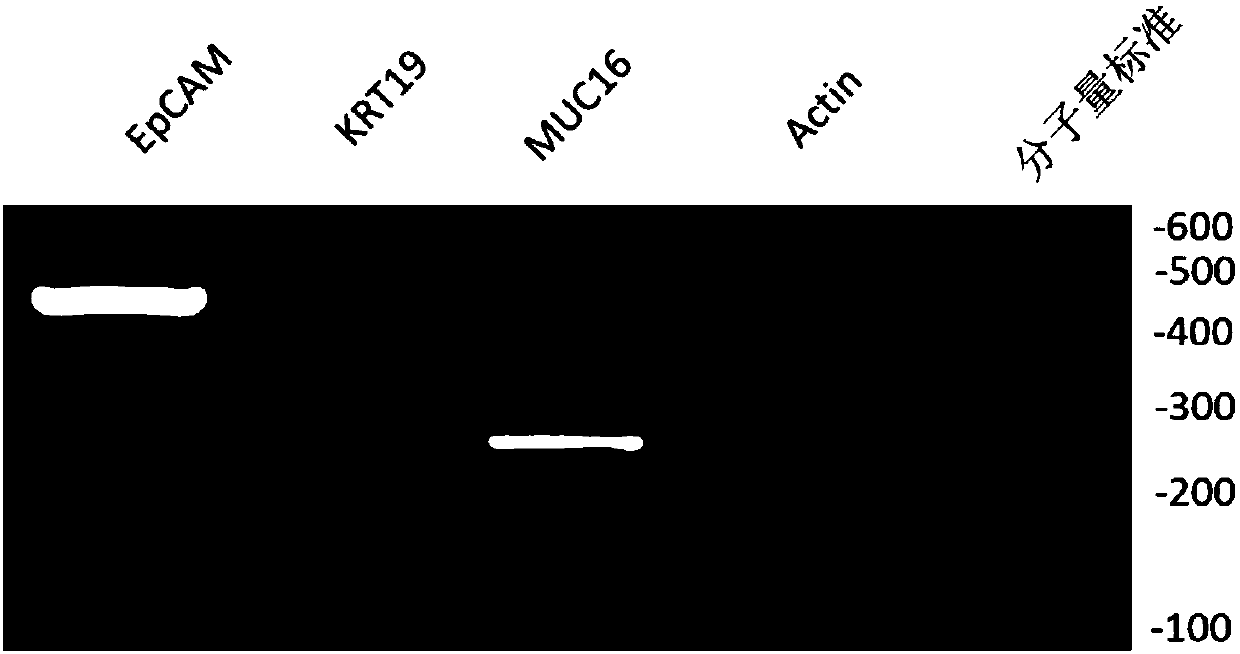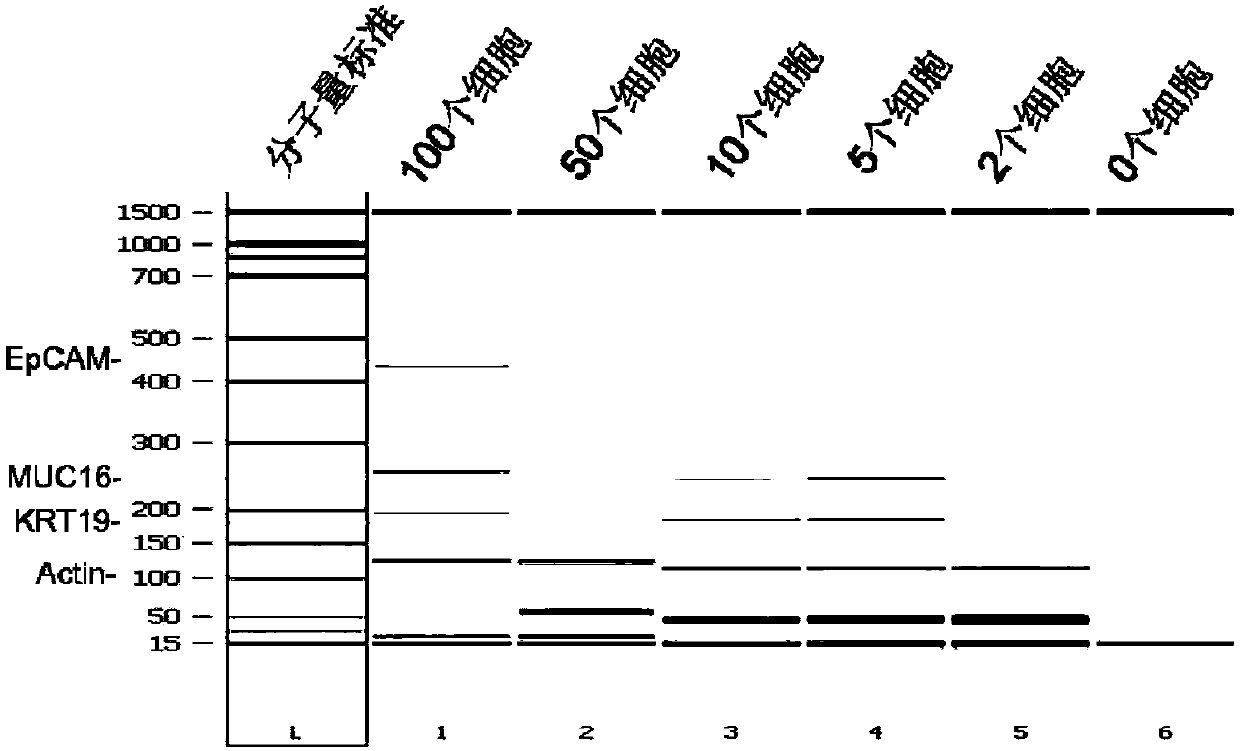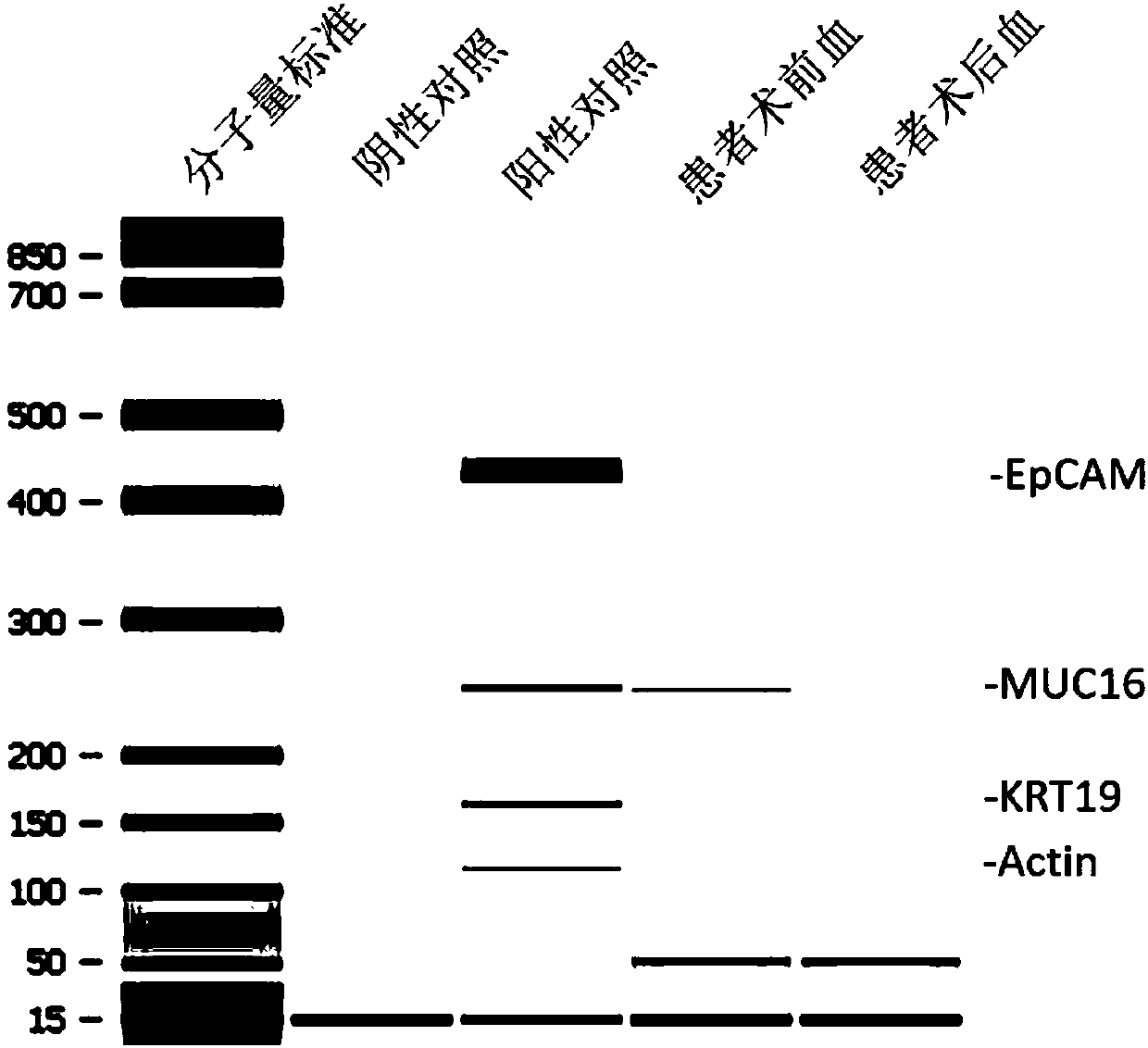Kit for detecting pancreatic cancer cells in peripheral blood
A pancreatic cancer cell and kit technology, applied in the biological field, can solve the problems of no pancreatic cancer, difficult to identify, poor patient prognosis, etc., and achieve the effects of small sample size, high detection sensitivity, and small damage.
- Summary
- Abstract
- Description
- Claims
- Application Information
AI Technical Summary
Problems solved by technology
Method used
Image
Examples
Embodiment 1
[0068] Example 1: Preparation of magnetic beads bound to pancreatic cancer antibody:
[0069] The antibodies used were anti-EpCAM monoclonal antibody and anti-CK20 monoclonal antibody. After the above two antibodies were labeled respectively, the above two labeled magnetic beads were mixed and used.
[0070] Labeling method: magnetic beads produced by Invitrogen, USA M-450Tosylactivated. The marking method is strictly in accordance with the product instructions.
[0071] The labeling ratio is: label 500 μL magnetic beads per 100 μg antibody, and mix in equal amounts after labeling.
Embodiment 2
[0072] Example 2: Isolation of pancreatic cancer cells:
[0073] 2.1 Sample handling:
[0074] Take 5 mL of peripheral blood from patients with pancreatic cancer, anticoagulate with EDTA, store at 4 degrees, and use within 48 hours.
[0075] 2.2 Magnetic bead treatment:
[0076] Wash the magnetic beads bound with pancreatic cancer antibody (antibody-labeled magnetic beads, which are mixed magnetic beads labeled with two antibodies, and prepare antibody-labeled magnetic beads according to the ratio of 1 mL sample to 25 μL magnetic beads) with PBS repeatedly for three times, and separate the magnetic beads. Beads, kept on ice;
[0077] The specific operation is: draw 125μL of marked magnetic beads into a 1.5mL centrifuge tube, gently blow and mix with a pipette (note that a vortexer cannot be used), and then place it on the magnetic bead enricher for 1min. , to attach the magnetic beads to the wall of the centrifuge tube, discard the supernatant; then add 1mL PBS, place it on...
Embodiment 3
[0084] Example 3: Detection of pancreatic cancer cell markers:
[0085] 3.1 mRNA purification
[0086] Mix 40 μL magnetic beads with oligonucleotide Oligo(dT) into a 1.5 mL centrifuge tube, add 500 μL lysis / binding buffer to wash twice, separate magnetic beads, add supernatant, mix well, and incubate at room temperature 10min, let the mRNA bind to the magnetic beads; then separate the magnetic beads, use 500 μL buffer A to wash the magnetic beads twice, separate the magnetic beads, then wash the magnetic beads twice with 500 μL buffer B, separate the magnetic beads, and then use 100 μL RNase- Wash once with free water, separate the magnetic beads, resuspend the magnetic beads with 29.5 μL RNase-free water, incubate in a water bath (or metal bath) at 55°C for 5 min, and place on ice for 2 min to obtain the mRNA / magnetic bead mixture.
[0087] The mRNA / bead mix cannot be stored and needs to be reverse transcribed immediately.
[0088] 3.2 Reverse transcription:
[0089] The r...
PUM
 Login to View More
Login to View More Abstract
Description
Claims
Application Information
 Login to View More
Login to View More - R&D
- Intellectual Property
- Life Sciences
- Materials
- Tech Scout
- Unparalleled Data Quality
- Higher Quality Content
- 60% Fewer Hallucinations
Browse by: Latest US Patents, China's latest patents, Technical Efficacy Thesaurus, Application Domain, Technology Topic, Popular Technical Reports.
© 2025 PatSnap. All rights reserved.Legal|Privacy policy|Modern Slavery Act Transparency Statement|Sitemap|About US| Contact US: help@patsnap.com



